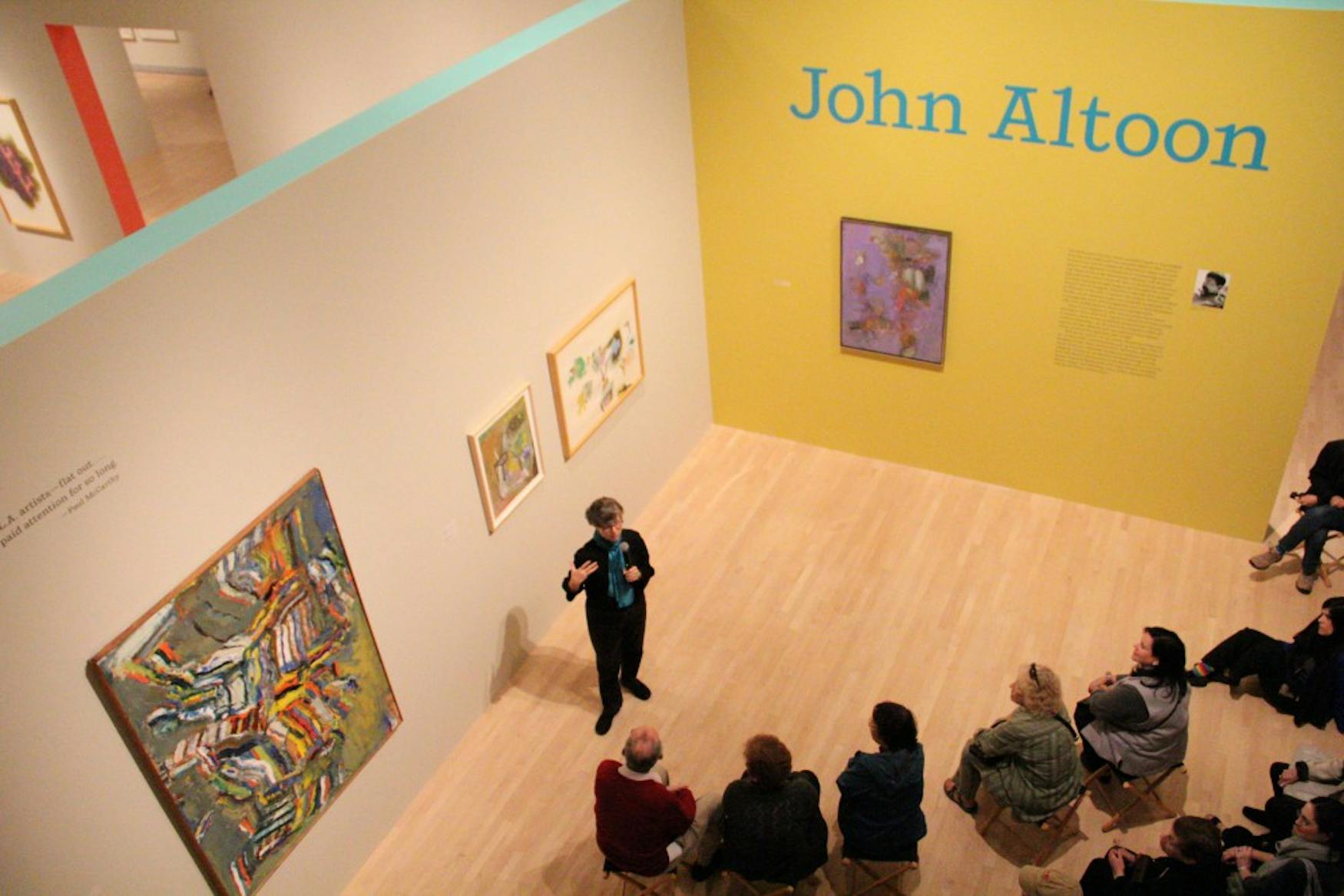LACMA curator speaks about artist on view
It is clear that from her gallery talk on Wednesday that Carol Eliel knows something about art and, specifically, a lot about Los Angeles-based artist John Altoon (1925 to 1969). Taking the audience in a guided tour through John Altoon, the new exhibit that opened at the Rose Art Museum that same evening, Eliel spoke gracefully and knowledgeably about the life and work of Altoon.
Eliel curated John Altoon at the Los Angeles County Museum of Art, which ran from the beginning of June through mid-September of this year, and was then transferred to the Rose. The exhibit was “the first major retrospective devoted to this little known but important artist,” the LACMA website notes. John Altoon was scaled down a bit to fit the space in the Rose, but the current exhibit uses works all acquired from the exhibit in Los Angeles. Eliel helped to facilitate the curation at the Rose—choosing which pieces to carry from the museum in Los Angeles and approving the layout of the Rose exhibit.
During her talk, Eliel took the audience from piece to piece as she discussed the vast array of Altoon’s work at different moments in his life. The exhibit is structured chronologically by different phases in the artist’s lifetime, and Eliel went through the exhibit in the same fashion, weaving in some details about his life throughout to give context to the chronological nature of the exhibit.
Although Eliel gave some details about the artist’s life in order to contextualize his art at the beginning of the tour, she said that her main focus in the talk was not to put too much emphasis on his personal history. Many critics take a biographical standpoint, explaining his works through a lens of the artist’s bipolar disorder. But in her talk Eliel said she wanted to strive to get away from that and instead to look at the pieces in terms of their own content.
Altoon’s work is not easily placed in any genre, Eliel said. He was interested in both figuration and abstraction and used both simultaneously in his work—something that was not common during the time of his career in the middle of the last century. Altoon “broke the mold of people like Warhol,” Eliel said. Eliel talked about one of Altoon’s earliest pieces, “Jazz Players,” (1950) as an example of his different interests. The piece, which shows a figuration of two jazz players, does not fit into one genre. The piece also exhibits Altoon’s interest in abstraction—a closer look will reveal that that it is made of mosaic-like tiles.
The Ocean Park series came next. Apparently, Altoon named his collections by the studio he was working in at the time of their creation—in this case, Ocean Park in Los Angeles. In this series, Altoon plays with advertisements and popular culture and makes them comical in a subversive way. Having been a commercial illustrator, Altoon knew how to draw mercial images.
For this series, Altoon did his own drawings but hired professionals to do the lettering on his recreations of advertisements. Eliel describes it as an “early iteration of conceptual art,” art in which an artist creates the idea for the work and then uses professional builders, architects or other specialists to actually create the work.
Throughout her talk, Eliel addressed and attempted to debunk classic scholarship on Altoon that sees some of his artwork as misogynistic. Eliel argued just the opposite, however. She says that in many of his paintings we see that women are empowered—they are looking directly into the eyes of the viewer while, by contrast, most of the men are looking away. In “Untitled” (1966), Eliel noted the domineering quality of the woman—a female figure with an animalistic, bear-like head looking down at the animal-like male figure crouching at her feet.
Eliel spoke about Altoon as an “artist’s artist,” meaning that he was not very well-known during his time and is still not very famous outside the artistic community. Eliel decided to pay homage to this fact by placing quotes by other artists about Altoon on the walls of the exhibit.
It is very clear that Eliel admires Altoon—his disregard for fitting into a clear genre and the lightness and humor he displays in his work. His work is “never overdone or underdone—he just hits it where he wants it to be,” she said. Her admiration was reflected in her talk and the audience was all the more knowledgeable for it.




Please note All comments are eligible for publication in The Justice.